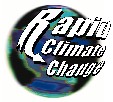Dataset Collection
RAPID The Impact of Climate Change on the North Atlantic and European Storm-Track and Blocking Model output data
Abstract
Data from "The impact of climate change on the North Atlantic and European storm-track and blocking" project was a Natural Environment Research Council (NERC) RAPID Climate Change Research Programme project (Round 2 - NE/C509115/1 - Duration 14 Mar 2005 - 13 Mar 2008) led by Prof Sir Brian Hoskins of Imperial College London, Grantham Institute for Climate Change, with co-investigators also at the University of Reading.
This dataset collection contains climate model outputs from model runs xbzlf, xbzlg, xcpub, xcpuc, xcpud, xctf and xcth.
Rapid Climate Change (RAPID) was a £20 million, six-year (2001-2007) programme for the Natural Environment Research Council. The programme aimed to improve the ability to quantify the probability and magnitude of future rapid change in climate, with a main (but not exclusive) focus on the role of the Atlantic Ocean's Thermohaline Circulation.
The major impact of climate change in the European region is likely to be through changes in the storms coming through from the North Atlantic storm-track and in the blocking high-pressure systems that can occur there. Changes in the latitude, frequency or intensity of storms would have implications in terms of flooding and wind damage as well as average precipitation. Blocking highs bring settled spells with little precipitation and temperatures that can be much above average in summer and below average in winter, sometimes with snow. Again changes in their position, frequency or intensity would have important impacts. Reduction in the strength of the thermohaline circulation in the North Atlantic could induce rapid climate change through its impact on the storm-track and blocking. Even smoothly increasing greenhouse gases could lead to rapid changes in the storm-track and blocking either through a reduced thermohaline circulation or a non-linear response. At present there is little confidence in the climate models' abilities to project such changes. In this project, new high-resolution atmospheric models, new analyses of the atmosphere since 1958 and new diagnostic techniques have been used to give such projections and an assessment of the confidence that can be had in them.
Temporal Range
1978-12-01T00:00:00
2008-11-27T23:59:59
Geographic Extent
90.0000° |
||
-180.0000° |
180.0000° |
|
-90.0000° |

